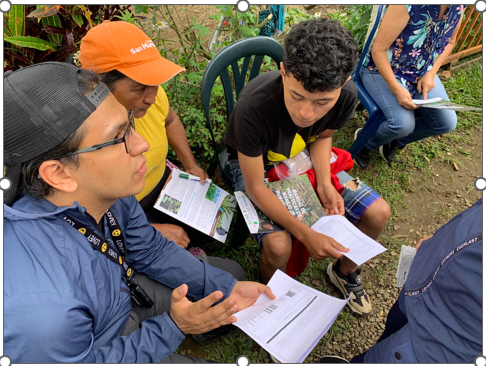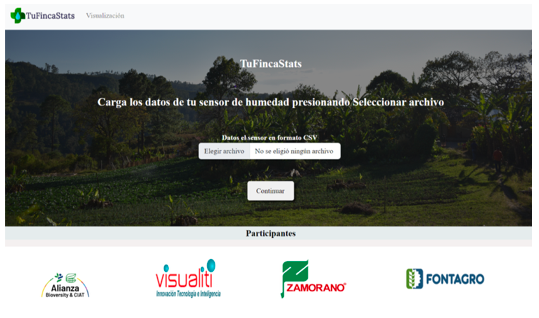The perfect tool for the device

By: Daniela Salas, Oriana Gómez, Oscar Estrada y Luis Sandoval
The technological solution developed within the framework of the "Digitalization of small-scale agriculture" project is the result of an articulated process between research, academia and private companies that consists of a device that allows measuring soil moisture, with the capacity to collect data for up to five months in the field, and without the need for a wireless or internet connection, which allows it to be used in areas with limited or no internet access and no access to electricity.
This result originates from a judicious evaluation and analysis of the target user who is expected to be impacted by the project, the small and medium farmer. After gathering enough information, the project leaders determined two requirements that the data visualization tool should have in order to overcome the adoption barriers identified in the phases prior to the design and development of the device: i) The tool must load the data captured by the soil moisture measuring and recording device offline, without remote connection, from a computer or mobile phone with general characteristics, without the need to install any type of software, application, driver and/or special plugins ii ) The off-line digital tool should automatically process, generate, and display sensor data in graphic and tabular format, in a user-friendly way, regardless of their user profile.
This is how the team in charge of the project created the Tu Finca Stats web application: https://tufincastats.open-aeps.org/, the app allows the visualization of the data captured by the devices installed in the field. This application is publicly available on the internet and only needs to be uploaded once for continuous use. Once the page is loaded, the application keeps the information available even without an internet connection, as long as the page remains open, there the user can add the type of soil texture of his farm, easily interpret the data, customize his report and download it in pdf.

To use the application, it is only necessary to insert the microSD memory of the soil moisture device into any computer with the help of the adapter that is included with the sensor, select the Excel file found in the MicroSD information folder, save it on the computer and open it from the Web application https://tufincastats.open-aeps.org/ by clicking on “Open file”. The application will automatically generate a graphical and tabular report of the data collected by the device. Additionally, the application offers the option of selecting the soil texture to automatically plot the permanent wilting points and field capacity in the graphs according to the characteristics of each type of soil, thus allowing to visualize the moments in the crop cycle. in which the plants were in saturation, wilting or with optimum humidity.

In addition, the web application allows you to customize the report and filter the data to select a desired time period from the entire series available in the file and save it as a pdf file for printing and recording.
The "Digitalization of small-scale agriculture" project, financed with Fontagro funds, has developed a device and its digital tool that bring the field closer to a digital transformation that adapts to the requirements of the environment and communities to provide a focused solution on the importance of soil moisture measurement for crop water management and informed decision making about irrigation. The graphs generated by the web application allow visualizing the behavior of the soil moisture content of the crop and taking actions for the next crop cycle, either through excess management practices or moisture conservation.
Here you will find the data visualization video tutorial: click here.
Here you will find the latest version of the soil moisture management practices manual: click here.
and here you will find a digital copy of the RASTA manual to identify soil textures: click here.




